Here is a collection of some of my favorite wilderness shelters from around the world.
Navajo Hogan Shelter – A Hogan is a traditional Navajo home. They are traditionally constructed with thick wooden branches, tree bark and mud. They are still widely used in Navajo ceremonies.

Remote Fishing Hut Shelter
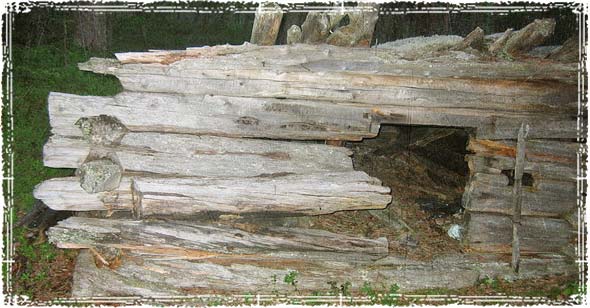
A fisherman’s hut at sea in Pangandaran
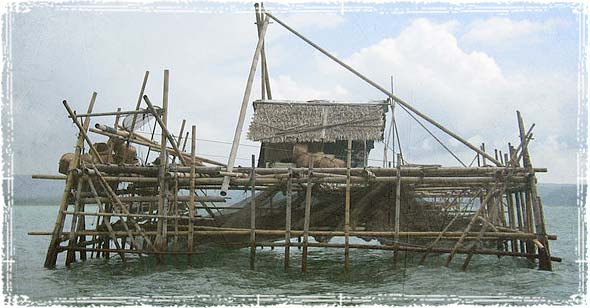
A Shelter near the Famous Appalachian Trail
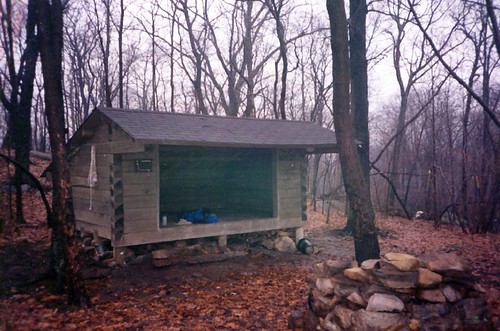
Photo by jps246 @ Flickr
A Really nice Lean-To Shelter
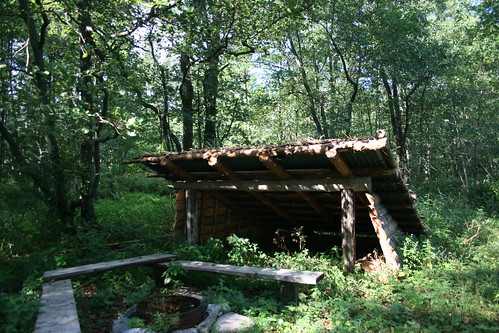
Photo by wheany @ Flickr
A natural Shelter out in the woods
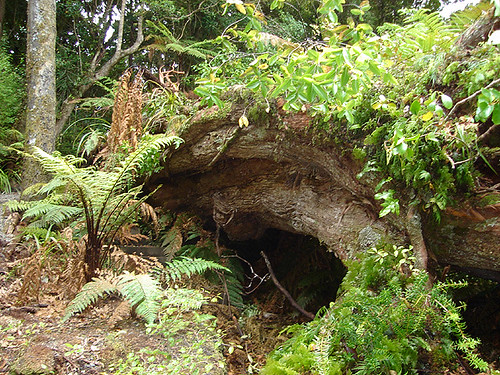
Photo by brainsluice @ Flickr



I’m thinking that I could get by in one of those…one o the perks o being single and lexible!
Thought id share this interesting fact… If you build a lean to or another shelter where youll have the opportunity for an open wall near fire… If you can get ahold of a large sheet of plastic cover the open wall in plastic and build your fire a safe distance from the plastic itll actually allow the heat from the fire to enter your shelter and wont let it back out… this is simple physics but it works well… I heard if u cant use plastic thin cloth and other thin materials that can get warm to the touch near a fire will insulate vs the outside weather but will allow for heat transfer… Also i hear u can take metal conducting material and run in from inside your fireplace to the inside of your shelter and it will naturally beat a conduit for heat into your shelter… I have tested the plastic idea and its awesome havent tested the conductor… =P enjoy and practice!
I’ve tried the plastic idea and it worked amazingly… It was a warm evening, but that night turned out to drop down to around 15F. I had a 6×9 plastic painters drop sheet bundled in my pack and I strung it up to cover the open face of my lean-to and I am guessing it had to have been close to 70F degrees or more in there…. I was stripped to my undies in an hour and slept like a baby.
I like that Navajo shelter, very cool. That seems pretty livable.
does anyone no how to build this shelter it look like it wood be graet in the desart. can someone explain how thank mike.
I like the Navajo one. It looks like it could be easily camo’d. It would definatly suck if there was a heavy downpour, it don’t look like it take that too well.
Mike, it’s a basic wooden frame with clay and some basic branches to withstand the weight of the clay. I lived in one for a month in Moab Utah.
Keep in mind, it’s a cerimonial shelter, showing respect for in the most general terms, Earth. It’s not truely a Hogan unless build to traditional specification.
im doin the lean to 4 a skool project
nice shelters
mite even put some on my webbie some great shelters around the world
We have a lot of the “natural Shelter out in the woods”. However, they are usually very wet and come with occupying critters!
It looks like a bear den to me!
The natural shelter could be a problem with dangerous critters that may already occupy it, if I could choose the Navajo shelter would be the best due to it being sealed.
I’m going to build that log cabin lean to.
If the forest service green police find my cabin will they take me to the federal forced labor death camps? I need to cache a lot of food and gear. Only so much fits in even the larger (5000 – 6000 cubic inch) backpacks.
Don’t put it all in your cabin. If you’re near a scout camp, church camp, or even forest service buildings, you can bury stuff under those – assuming a crawl space. Under your own floor would work well too, as long as you can not leave a ‘door’ for anyone to find as a clue.
Eric Rudolph had dynamite buried under a boy scout cabin. Those places are only occupied part of the year. If nothing else, build some cubbies into the ground as sturdy cache points, and bury those when they’re full. (yes, it means carrying in construction materials like cement, but its dependable long-term caching if done right)
I’m not sure about this, but a milsurp steel container with gaskets might work well for long-term too. Pick a spot you can camo with rocks and shrubs, or under some wild rose bush, load the container, coat it generously with cosmoline or something similar, and just leave it there under a camo tarp in the hidden location. A year of two of leaves and it’ll be the next thing to invisible.
Don’t hide anything too close to your cabin – but close enough to carry or drag it back when you need to get into it. Also close enough to protect with a rifle.
Ok, This may sound weird but, I’m in HS and im alreading getting prepared. I notice the younger socites are very violent. So I love this website for buging out things. Heres a sugestion on if you in an area that has Either Birch Bark Trees or Clay. Take the idea from the Navajo and the lean to and combine them. Take the lean to and put clay or birch bark on on it so you could possible have a house thats well insilated from animals and somtimes insects. That was just a suggestion. =)
You are not the only teen who is ready (and happily anticipating [not the people dying, just the fact that I can ‘live off the land’]) for the world to end.
I think we could all learn some necessary survival skills, shelter, food gathering and preparation from other cultures and societies. The shelters you have posted above are really cool.
Back in the day when I took my vacations on a motorcycle, these were what I used instead of having to carry a tent. I travelled the Rocky Mountains, mostly, so material was plentiful. Lean-to’s or A-frames were the easiest, logs and branches. I stayed very warm and very dry. Usually left them standing for the next guy to use.
All those ideas sound very good. As a career firefighter be careful on the material you use and size when making the conduction heater from your fire pit or heater to inside your dwelling. The materials your dwelling is made of or the STUFF you bring along inside with you needs to be far enough away form the material that will help heat your dwelling
all the animals and bugs know about all the natural shelters, so you can easily have company if the weather is bad, and/or at night, especially from spiders, centipedes, snakes and skorpions. A clear plastic PEVA shower curtain lets in a LOT more radiant heat than the cloudy plastic. Search youtube for FarNorthBushcraft’s variant of the Korchanski supershelter. You definitely want a long-log fire, dont forget to bring eyescrews for anchoring the sticks that keep the top log from rolling towards you as it burns! :-) You also need 2×4 ft of aluminum foil to front a brush “wall” on the far side of the fire, so that more heat is radiated towards you and so that the smoke is drawn away from you.
I find that a pair of casualty blankets, taped into a 9×7 sheet, then folded over into 9×3.5 ft, and snaps all around to form a bag, with 1.5″ of cloth strips sewn all around, to be many times more useful, year round than any sleeping bag. It’s not effected by its getting wet,it’s very low cost, it’s a tarp over you or a korchanski super shelter when paired with a 6×8 PEVA shower curtain. You do need a bugnet bag above you, between you and the mylar, to handle the condensation. If you’re dressed to sit on a hunting stand for a few hours at 35F, this 2 lb bag will let you sleep ok at 35F, in the rain, if you’re up in the 1 lb monofilament gillnet hammock (mule-tape rigging) with the mylar bag inside of the 3×8 ft PEVA bag (also with snaps and cloth strips. You of course remove the lead weights from the gillnet. They can be replaced with pebbles if you need the net to feed
yourself. If you need to handle colder temps, you simply stuff the area between the bags with debris. Since the mylar is impermaable to water, the debris need not be dry, but it’can’t be dripping wet, or full of snow, either. If you do this, you’ll sleep ok down to 20F. If you’ll also get into the bug net bag and stuff debris between that bag and the mylar, and stuff debris between your cammies and your longjohns, you’ll sleep ok down to 10F. If you’ll dig a dakota pit and use a fire for half an hour to heat up rocks and water bottles, you’ll be ok at 0F. If the ground is hard frozen, it could take you an hour of chopping with the E tool to get the Dakota pit dug, tho! :-) Still, the ability to hide the flames at night is sometimes worth the time and effort. If it’s colder than 0F, you should be obtaining a bicycle and getting the hell out of that area. You can easily average 100 miles per night on a bike. So a week will get you out of the cold. Dont forget your watch, so you’ll know when to hole-up, before dawn. You leave tracks in the snow, and the animals are all hibernated and migrated, fish are under ice, all the plants died back and covered up. so gtfo. If you need more warmth, this gear set converts into a Korchanski super-shelter, with a fire, and if it’s 0F or colder, there will be little to fear from enemies. at night. i’d not send up smoke signals in daylight, tho. heat up plenty of water and rocks before dawn.